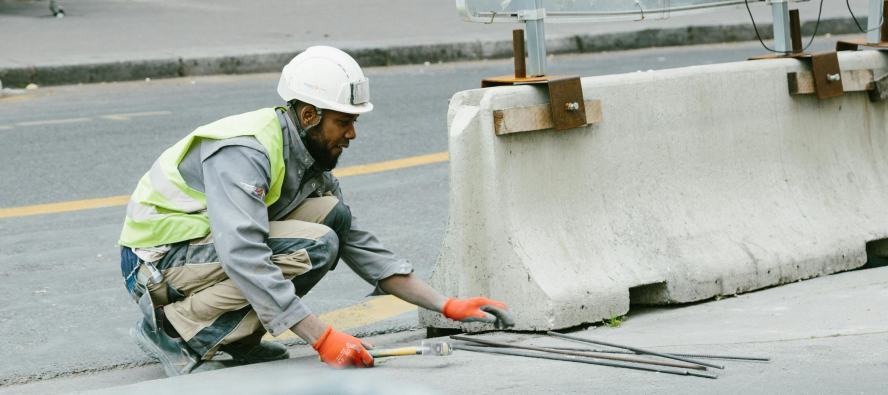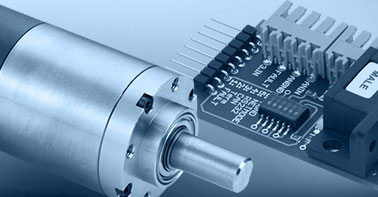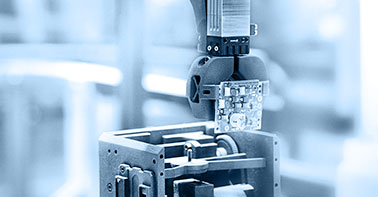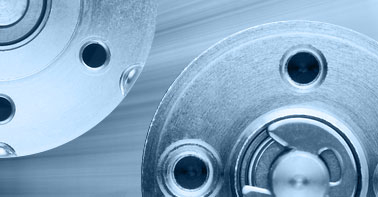- info@ems-ltd.com
- 0118 9817391
Home > PR > A fast fix: Self-repairing cities
A fast fix: Self-repairing cities
11/12/24 - Developing drive systems for autonomous maintenance robots
11th December 2024
Filed under:
Faulhaber, Planetary Gearheads, Maintenance

Street works carried out in England between 2022 and 2023 cost the economy some £4 billion in journey disruption. Infrastructure work is essential, but it is necessary to minimise its impact on drivers and residents. Could robotics be the solution?
Maintenance work carried out by gas, water and telecoms companies is necessary for the provision of essential services. But less welcome is the disruption that these street works often bring. Speed restrictions, closed pavements and temporary traffic lights can cause mile-long tailbacks at worst, and a mild inconvenience at best.
To tackle this issue, the Government proposed plans earlier in 2024 to crack down on street works, with increased fines on utility companies allowing works to overrun into the weekend and bank holidays. If successfully implemented, the scheme could have a massively positive impact for drivers, deterring utility companies from causing unnecessary disruption.
But there is something the plan doesn’t address — the speed of these repairs. While awarding late fines to companies might encourage them to complete works more quickly, it could also lead to work being rushed. Substandard quality repairs could result in work needing to be redone, which only adds to the issue of disruption.
Evidently, a more rounded approach is needed to tackle the challenge of infrastructure maintenance. So, what else should be considered?
Self-repairing cities
To address the speed and responsiveness of repairs, integrating more autonomous technology into maintenance processes could be advantageous. One project led by the University of Leeds is investigating this with its concept of ‘self-repairing’ cities. This £4.2m research project aims to minimise street disruptions using specially designed maintenance robots.
Maintenance robots offer several advantages. For example, repairs at height, such as broken streetlamps often require a specialist vehicle with a crane-like mechanism to lift the worker up to the street light. Not only does this require dedicated equipment — which is often limited in number — but it also means that part of the road or pavement is obstructed while work is being carried out.
The self-repairing city concept presents a more streamlined solution, using drones. These can be stationed around cities and dispatched as required to quickly fix such problems. Health-and-safety risks of lifting workers up at height are decreased, with minimal disruption to road users in the process.
Large-scale inspection
These drones may also be useful for inspection. Conducting road condition surveys manually is time-consuming. And it’s unsafe to slow down to inspect the condition of a pothole on a road when surrounding traffic is moving much more quickly.
It’s possible that some cars will be able to record and transmit data on road condition on their own — Mercedes Benz trialled this with its own vehicles in the Netherlands. But until then, drones can offer a much more streamlined solution. Able to work around the clock, drones can quickly identify small cracks and potholes before they escalate into more serious problems.
Robotics can also be used to inspect areas we can’t see. Underground water pipes in the UK lose thousands of litres each year due to cracks and leaks. In this application, robots could be used to crawl through pipes too small for human workers, and remotely operated for safe and thorough inspection.
The benefits of these maintenance robots are clear to see. With more systematic inspections, faults — whether on our roads, on-street infrastructure, or underground — can be picked up far more quickly, enabling faster, cheaper repairs. The integration of automation technology into a utility company’s toolkit could be hugely advantageous, but it all begins with the right robot.
Building a robot to meet demands
Whether it’s a small DC motor powering drone propellers or carefully positioning a robotic arm, how well these tasks are performed is down to the capabilities of the drive system.
There are several key elements for design engineers to consider when specifying a suitable drive system for maintenance robot applications. Weight is a vital consideration. Drones, for instance, need to be lightweight for several reasons. A lighter device will have more power efficiency, but heavier drones can also demand specialist licenses when being flown in built-up areas.
Developments in drone technology, including the commercialisation of drones with advanced camera systems mean that building powerful, lightweight drones is becoming increasingly possible. But for drones carrying out repairs on their own, the weight and size of the tools required must also be considered. As a result, design engineers might find themselves with more weight restrictions than initially thought.
For robots operating in compact spaces, such as within pipework, size is another key consideration. The drive system must be as compact as possible to reduce the overall size of the robot, else they introduce another source of obstruction. Yet, despite a smaller size, the motor must still be able to provide enough torque to carry out repair tasks effectively, such as tightening screws or applying filler paste.
Precision gearheads
To help maintain a high torque, engineers can make use of precision gearheads. These small gearboxes sit between the motor and point of power transfer, slowing high motor speeds while significantly increasing available torque. They also help to improve movement control, ideal for high-precision work.
For compact applications such as those in small maintenance robots, planetary gearheads are the ideal solution. These make use of toothed planetary gears that rotate around the centrally mounted sun gear, with the number of teeth determining the reduction ratio. Planetary gearheads have an increased number of contact points thanks to the toothed gear design, making them especially robust, with a long service life.
And this access to higher torques can be achieved with minimal extension of the drive length. FAULHABER offers a variety of planetary gearheads, distributed exclusively in the UK and Ireland by EMS. The smallest gearhead in the micro range has a diameter of just 3.4 millimetres, with the smallest standard gearhead still only a diameter of six millimetres.
While infrastructure repair work is essential for many core services, there’s no denying the social and economic impact it can have. Updating maintenance strategies with the latest technologies, including advanced robotics, can help to minimise negative effects of repair work all while building better, more reliable infrastructure for the future.
To learn more about FAULHABER's range of planetary gearheads, get in touch with a member of EMS's expert team.
- Categories / Tags
- 1024...SR
- AEMT
- AESL
- Acceleration
- Agriculture
- Agritech
- Autoclave
- BHS
- BHT
- BHx
- BLDC
- BP4
- BRC Series
- BX4
- BXT
- BeBionic
- Bearings
- Bespoke
- Brushed
- Brushed DC Motors
- Brushless
- Brushless DC Motor
- Brushless DC Motors
- Brushless Dc Motors
- Brushless Motor
- Buhler
- Building Automation
- COVID
- CXR
- Catalogue
- Company Update
- Controller
- Coreless
- Coventry
- Custom
- Custom Design
- Custom Drive Design
- DC Motor
- DC Motor Supplier
- DMN
- Dc Motor
- Design
- Dimatech
- Drones
- EDS
- EMS
- EMS News
- EV
- Encoder
- Ewellix
- Exoskeleton
- Expo
- FAULHABER
- Factory
- Faulhaber
- Flat
- GPT
- Galil
- Gearhead
- IEF3
- IMC
- Industry 4.0
- Industry 4.0. Blog
- Inspection
- KAG
- LL06
- LM
- LVC
- Laboratory Automation
- Linear
- Linear Actuator
- Logistics
- M50
- M80
- MC3
- Maintenance
- Manufacturing
- Mechatronics
- MedTech
- Medical
- Medical Devices
- Medical Imaging
- Medtech
- Merkel
- Motion Control
- Motor
- Motor Supplier
- Neurosurgery
- New
- Nidec
- Nidec Servo
- Optical
- Pain Relief
- Piezo
- Piezomotor
- Pipeline
- Planetary
- Planetary Gearheads
- Point Of Care
- Precision
- Precistep
- Process
- Production
- Quickshaft
- Robot
- Robotics
- Robots
- SKF
- SR Series
- Samples
- Servomotors
- Small DC Motor
- Software
- Space
- Sponsorship
- Stepper
- Stepper Motor
- Stepper Motors
- TMS
- Testing
- Trade Show
- 1016
- 1660
- 1935
- 2017
- 2018
- 2020
- 2021



